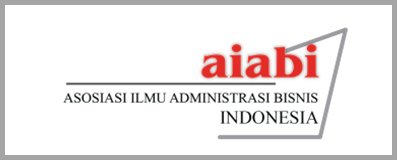Exploring The Interplay Of Organizational Commitment, Culture, And Job Satisfaction In Enhancing Employee Performance
DOI:
https://doi.org/10.31334/bijak.v22i1.4581Keywords:
Organizational Culture, Organizational Commitment, Work-Life Balance, Job Satisfaction, Banking Sector, Employee EngagementAbstract
This study investigates the relationships among organizational culture, organizational commitment, work-life balance, and job satisfaction in Bank XYZ, encompassing employees across various regional offices in/ Indonesia. Utilizing a quantitative research design, a survey was conducted with 304 respondents, including top management and staff. According to the findings, the culture of an organisation has a substantial impact on the level of commitment that employees have to their organisation, which in turn leads to increased job satisfaction. In addition, it has been determined that a healthy balance between work and personal life is a significant component that has a beneficial impact on both organisational commitment and job satisfaction. The results suggest that fostering a strong organizational culture and implementing effective work-life balance initiatives can lead to increased employee satisfaction and engagement, ultimately benefiting organizational performance. In addition to providing useful advice for enhancing employee outcomes, this research makes a significant contribution to the understanding of the significance of these components in the banking industry.
References
Abdi, M. N., & Chalimah. (2023). Pengaruh Work Life Balance, Budaya Organisasi, dan Kepuasan Kerja terhadap Komitmen Organisasi. Jurnal Ekonomi Dan Bisnis, 26(02), 112–119.
Algarni, M. A., & Alemeri, M. (2023). The Role of Employee Engagement, Job Satisfaction and Organizational Commitment on Happiness at Work at a Saudi Organization. International Journal of Business and Management, 18(2), 27. https://doi.org/10.5539/ijbm.v18n2p27
Alqahtani, T. H. (2020). Work-Life Balance of Women Employees. Granite Journal: A Postgraduate Interdisciplinary Journal, 4(May), 37–42.
Anam, K., Baiturrahman, J. R., Bahari, B. A., & Anshori, M. I. (2023). Pertukaran Anggota dan Pemimpin (Leader Member Exchange). Journal of Management and Social Sciences, 2(3), 163–182.
Berliana, M., Siregar, N., & Gustian, H. D. (2018). The model of job satisfaction and employee performance in telecommunication industry. International Review of Management and Marketing, 8(6), 41–46. https://doi.org/https://doi.org/10.32479/irmm.7183
Berry, G. R., & Hughes, H. (2020). Integrating Work–Life Balance with 24/7 Information and Communication Technologies: The Experience of Adult Students With Online Learning. American Journal of Distance Education, 34(2), 91–105. https://doi.org/10.1080/08923647.2020.1701301
Blau, P. (1964). Exchange and power in social life. Wiley.
Cieri, H. De, Holmes, B., Abbott, J., Pettit, T., Cieri, H. De, Holmes, B., Abbott, J., Pettit, T., Cieri, H. De, Holmes, B., Abbott, J., & Pettit, T. (2005). Achievements and challenges for work / life balance strategies in Australian organizations Achievements and challenges for work / life balance strategies in Australian organizations. The International Journal of Human Resource Management, 16:1(January). https://doi.org/10.1080/0958519042000295966
Faisal, A., Hameed, M., & Aleemi, A. R. (2022). Work-Life Balance and Job Performance: A Mediating and Moderating Model. Market Forces, 17(1), 1–22. https://doi.org/10.51153/mf.v17i1.558
Faturochman. (1997). the Job Characteristics Theory : Buletin Psikologi, V(2), 1–9.
Greenhaus, J. H., & Beutell, N. J. (1985). Sources of Conflict between Work and Family Roles. The Academy of Management Review, 10(1), 76. https://doi.org/10.2307/258214
Hackman, J. R., & Oldham, G. R. (1976). Motivation through the design of work: test of a theory. Organizational Behavior and Human Performance, 16(2), 250–279. https://doi.org/10.1016/0030-5073(76)90016-7
Hair, J. F., Hult, G. T. M., Ringle, C. M., & Rstedt, M. S. (2014). Partial Least Squares Structural Equation Modeling ( PLS-SEM ). SAGE Publications India Pvt. Ltd. B 1/11 Mohan Cooperative Industrial Area Mathura Road, New Delhi 110 044 India.
Hair, J. F., Risher, J. J., Sarstedt, M., & Ringle, C. M. (2019). When to use and how to report the results of PLS-SEM. European Business Review, 31(1), 2–24. https://doi.org/10.1108/EBR-11-2018-0203
Jackson, L. T. B., & Fransman, E. I. (2018). Flexi work , financial well-being , work – life balance and their effects on subjective experiences of productivity and job satisfaction of females in an institution of higher learning. South African Journal of Economic and Management Sciences, March. https://doi.org/10.13140/RG.2.2.28256.99843
Kelly, E. L., Moen, P., Oakes, J. M., Fan, W., Okechukwu, C., Davis, K. D., Hammer, L. B., Kossek, E. E., King, R. B., Hanson, G. C., Mierzwa, F., & Casper, L. M. (2014). Changing Work and Work-Family Conflict: Evidence from the Work, Family, and Health Network. American Sociological Review, 79(3), 485–516. https://doi.org/10.1177/0003122414531435
Klindžić, M., & Marić, M. (2019). Flexible work arrangements and organizational performance – The difference between employee and employer--driven practices. Drustvena Istrazivanja, 28(1), 89–108. https://doi.org/10.5559/di.28.1.05
Krishnan, R., & Loon, K. W. (2018). The Effects of Job Satisfaction and Work-Life Balance on Employee Task Performance. International Journal of Academic Research in Business and Social Sciences, 8(3), 668–678. https://doi.org/10.6007/ijarbss/v8-i3/3956
Masharyono. (2015). Pengaruh Job Characteristic Terhadap Semangat Kerja Pegawai. Jurnal Riset Akuntansi Dan Keuangan, 3(3), 813–830. https://doi.org/10.17509/jrak.v3i3.6622
Downloads
Published
Issue
Section
License

This work is licensed under a Creative Commons Attribution-ShareAlike 4.0 International License
Please find the rights and licenses in Majalah Ilmiah Bijak By submitting the article/manuscript of the article, the author(s) agree with this policy. No specific document sign-off is required.
- License
The commercial use of the article will be governed by the Creative Commons Attribution license as currently displayed on Creative Commons Attribution-ShareAlike 4.0 International License.
2. Author(s)' Warranties
The author warrants that the article is original, written by stated author(s), has not been published before, contains no unlawful statements, does not infringe the rights of others, is subject to copyright that is vested exclusively in the author and free of any third party rights, and that any necessary written permissions to quote from other sources have been obtained by the author(s).
3. User Rights
Majalah Ilmiah Bijak spirit is to disseminate articles published are as free as possible. Under the Creative Commons license, Majalah Ilmiah Bijak permits users to copy, distribute, display, and perform the work for non-commercial purposes only. Users will also need to attribute authors and Majalah Ilmiah Bijak on distributing works in the journal and other media of publications.
4. Co-Authorship
If the article was jointly prepared by more than one author, any authors submitting the manuscript warrants that he/she has been authorized by all co-authors to be agreed on this copyright and license notice (agreement) on their behalf, and agrees to inform his/her co-authors of the terms of this policy. Jurnal Bijak will not be held liable for anything that may arise due to the author(s) internal dispute. Majalah Ilmiah Bijak will only communicate with the corresponding author.
5. Miscellaneous
Majalah Ilmiah Bijak will publish the article (or have it published) in the journal if the article’s editorial process is successfully completed. Jurnal Bijak editors may modify the article to a style of punctuation, spelling, capitalization, referencing and usage that deems appropriate. The author acknowledges that the article may be published so that it will be publicly accessible and such access will be free of charge for the readers as mentioned in point 3.
Every accepted manuscript should be accompanied by "Copyright Transfer Agreement"prior to the article publication.





1.png)




